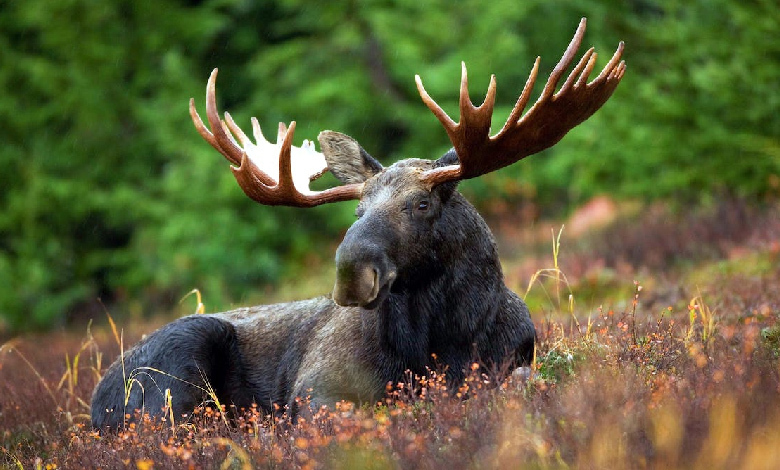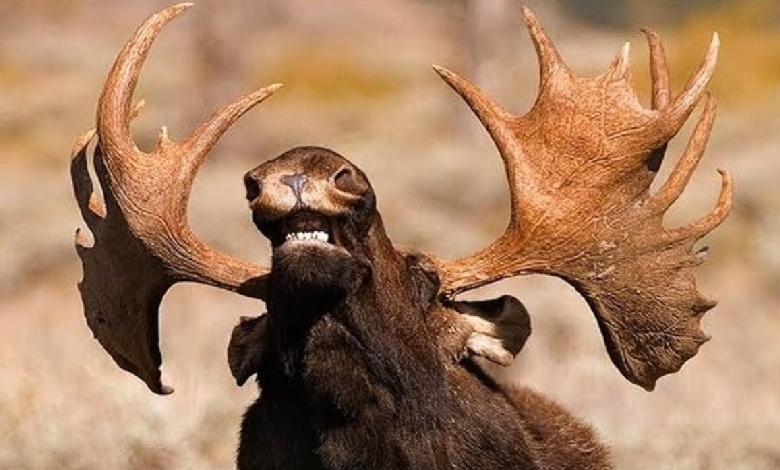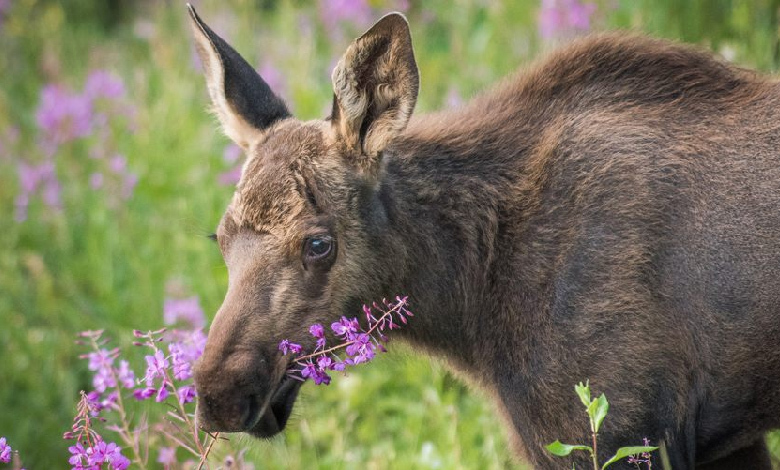7 unknown facts about moose Everyone should know

Majestic and imposing, moose are iconic creatures of the North American wilderness. While many people are familiar with these impressive animals, several lesser-known facts about moose may surprise even the most seasoned wildlife enthusiasts.
In this article, we’ll delve into seven intriguing facts about moose that shed light on their fascinating behavior, anatomy, and ecological importance.
1. Largest Deer Species:

Moose, although they may seem like horses, are really the biggest members of the family Cervidae, which is the scientific name for deer. A mature moose may reach a weight of 1,500 pounds and a shoulder height of more than 7 feet, making them extremely powerful animals.
2. Antler Growth:

The spectacular antlers of male moose, referred to as bulls, may reach a width of up to six feet. Moose do not grow antlers throughout their lifetimes, despite common assumptions. Rather, each year, bulls lose their antlers and develop a fresh set every spring, with age and genetics determining the size and shape.
3. Herbivorous Diet:

As herbivores in the main, moose consume a wide variety of plant materials, including leaves, twigs, bark, and water plants. Moose must eat a lot of food to satisfy their nutritional demands because, despite their enormous size, their digestive systems are not very effective.
4. Excellent Swimmers:

Moose may look clumsy on land, but they are surprisingly good swimmers. They are able to move across rivers, lakes, and marshes with ease because of their strong legs and buoyant bodies. In reality, moose have been known to traverse large bodies of water to find food and potential partners.
5. Solitary Creatures:

Even though they are sometimes portrayed in popular culture as being in groups, moose are actually solitary creatures, especially when it’s not breeding season. Although females may occasionally be joined by their offspring, adult moose prefer to travel and graze by themselves.
6. Vocal Communication:

Although they don’t have a lot of vocalization, moose do have a range of noises for communication. Bulls use their deep, guttural “bellows” to entice females and maintain dominance during the mating season. Furthermore, moose use their mouths to communicate by snorting, clicking, or grunting.
7. Ecological Role:

Moose have a significant influence on the environments they live in. By eating certain species and encouraging the growth of others, browsers contribute to the regulation of plant populations and the creation of habitat variety. Furthermore, moose contribute to the complex web of life in their surroundings by acting as food for predators like wolves and bears.
Moose are amazing animals with a wide variety of intriguing characteristics and habits. These little-known facts provide a greater knowledge of these iconic creatures and their crucial role in the natural world, from their remarkable size and antler growth to their solitary behavior and ecological significance.



